- Catherine
- September 9, 2023
- 7:51 am

John Doe
Answered on 7:51 am
The difference between 400G-BIDI, 400G-SRBD and 400G-SR4.2 is mainly in the naming convention and the form factor of the modules. They are all based on the same principle of using four pairs of multimode fibers, each carrying two wavelengths of 25G signals in both directions, for a total of 400G bandwidth. The term 400G-BIDI is a generic name for this technology, while 400G-SRBD and 400G-SR4.2 are specific names for the modules that implement it.
The 400G-SRBD module is based on the QSFP-DD form factor, which is a double-density version of the QSFP form factor. It has an MPO-12 connector that can be plugged into an existing QSFP port. The 400G-SRBD module can also be used for breakout applications, where it can be connected to four 100G-BIDI modules that use the QSFP28 form factor.
The 400G-SR4.2 module is based on the OSFP form factor, which is a new form factor designed for higher power and thermal performance. It has an MPO-16 connector that can support higher fiber counts and longer distances. The 400G-SR4.2 module can also be used for breakout applications, where it can be connected to four 100G-SR1.2 modules that use the SFP-DD form factor.
Both the 400G-SRBD and the 400G-SR4.2 modules are compliant with the IEEE 802.3bm protocol and the 400G BiDi MSA specification. They can support link lengths of up to 100m over OM4 multimode fiber.
People Also Ask
NVIDIA Releases Silicon Photonics CPO Switch
During GTC 2025, NVIDIA released the NVIDIA Spectrum-X (based on the Ethernet standard) and NVIDIA Quantum-X (based on the InfiniBand standard) silicon photonic network switches, enabling AI factories to connect millions of GPUs across regions while significantly reducing energy consumption and operating costs. NVIDIA Silicon Photonics CPO The partners listed
How to Use the XGSPON ONU Stick SFP+
Fiber-to-the-Home (FTTH) technology is revolutionizing internet connectivity. However, the closed devices provided by internet service providers often restrict users’ freedom. If you have a router or switch with an SFP+ interface, such as the Ubiquiti Dream Machine Pro, Mikrotik CCR series, or an OPNsense device, the XGSPON ONU Stick SFP+
The Ultimate Guide to Choosing a 5-Port Gigabit Ethernet Switch for Your Home Network
An efficient home network system is the foundation of contemporary technology, facilitating the smooth operation of activities such as streaming, gaming, and home offices. Gigabit Ethernet routers are an integral component of the home network system, and a five-port gigabit ethernet switch marks the initial stage of network enhancement. Smaller
Unlocking the Power of Enterprise Network Switches: Your Ultimate Guide
In the contemporary era characterized by rapid technological advancements, the infrastructure of an organization’s network is the foundation of any successful business. Efficient enterprise network switches are crucial for optimal productivity, full organizational communication, and meeting the needs of modern business functions. What are these switches and how can they
FiberMall Launches Liquid-Cooled Optical Modules and AOCs, Driving Green and Efficient Data Center Connectivity
FiberMall, a global leader in optical communication solutions, today officially announced the launch of multiple liquid-cooled optical modules and active optical cables (AOCs) spanning data rates from 10G to 200G. This new product lineup includes key models such as the 10G SFP+, 25G SFP28, 100G QSFP28, 200G SFP56, 400G QSFP112,
Understanding 10G-PON, XGS-PON, GPON, and 10G-EPON in Passive Optical Networks
In the context of modern telecommunications, Passive Optical Networks (PON) stand out as a noteworthy development since they allow businesses and residential users to connect to the internet faster and more reliably. Among the various standards which drive the PON technology, the 10G-PON, XGS-PON, GPON, and 10G-EPON are the most
Related Articles
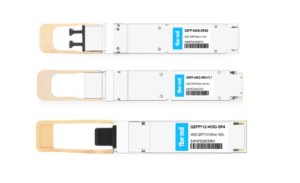
800G SR8 and 400G SR4 Optical Transceiver Modules Compatibility and Interconnection Test Report
Version Change Log Writer V0 Sample Test Cassie Test Purpose Test Objects:800G OSFP SR8/400G OSFP SR4/400G Q112 SR4. By conducting corresponding tests, the test parameters meet the relevant industry standards, and the test modules can be normally used for Nvidia (Mellanox) MQM9790 switch, Nvidia (Mellanox) ConnectX-7 network card and Nvidia (Mellanox) BlueField-3, laying a foundation for
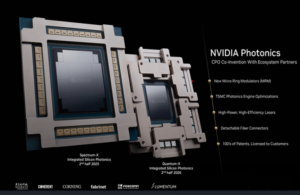
NVIDIA Releases Silicon Photonics CPO Switch
During GTC 2025, NVIDIA released the NVIDIA Spectrum-X (based on the Ethernet standard) and NVIDIA Quantum-X (based on the InfiniBand standard) silicon photonic network switches, enabling AI factories to connect millions of GPUs across regions while significantly reducing energy consumption and operating costs. NVIDIA Silicon Photonics CPO The partners listed
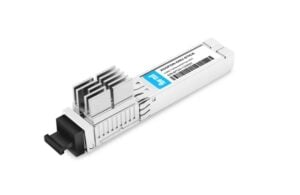
How to Use the XGSPON ONU Stick SFP+
Fiber-to-the-Home (FTTH) technology is revolutionizing internet connectivity. However, the closed devices provided by internet service providers often restrict users’ freedom. If you have a router or switch with an SFP+ interface, such as the Ubiquiti Dream Machine Pro, Mikrotik CCR series, or an OPNsense device, the XGSPON ONU Stick SFP+
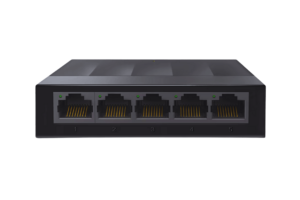
The Ultimate Guide to Choosing a 5-Port Gigabit Ethernet Switch for Your Home Network
An efficient home network system is the foundation of contemporary technology, facilitating the smooth operation of activities such as streaming, gaming, and home offices. Gigabit Ethernet routers are an integral component of the home network system, and a five-port gigabit ethernet switch marks the initial stage of network enhancement. Smaller

Unlocking the Power of Enterprise Network Switches: Your Ultimate Guide
In the contemporary era characterized by rapid technological advancements, the infrastructure of an organization’s network is the foundation of any successful business. Efficient enterprise network switches are crucial for optimal productivity, full organizational communication, and meeting the needs of modern business functions. What are these switches and how can they

FiberMall Launches Liquid-Cooled Optical Modules and AOCs, Driving Green and Efficient Data Center Connectivity
FiberMall, a global leader in optical communication solutions, today officially announced the launch of multiple liquid-cooled optical modules and active optical cables (AOCs) spanning data rates from 10G to 200G. This new product lineup includes key models such as the 10G SFP+, 25G SFP28, 100G QSFP28, 200G SFP56, 400G QSFP112,
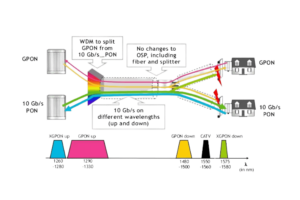
Understanding 10G-PON, XGS-PON, GPON, and 10G-EPON in Passive Optical Networks
In the context of modern telecommunications, Passive Optical Networks (PON) stand out as a noteworthy development since they allow businesses and residential users to connect to the internet faster and more reliably. Among the various standards which drive the PON technology, the 10G-PON, XGS-PON, GPON, and 10G-EPON are the most
